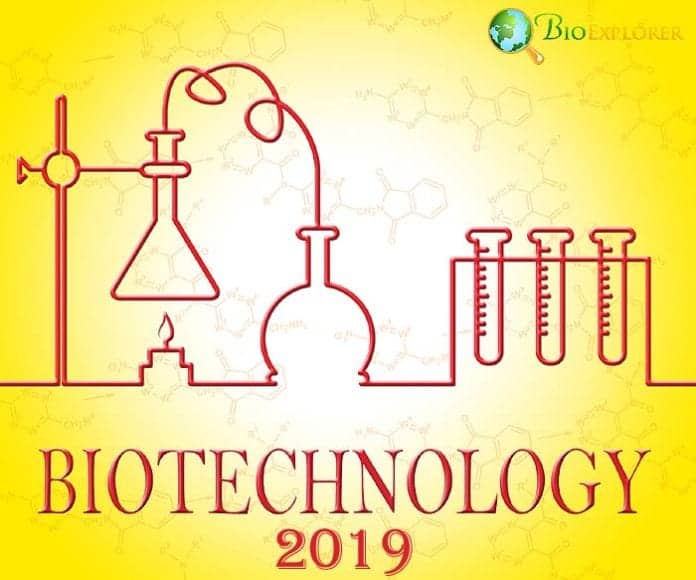
It is tough to choose the best biotechnological advances made in 2019.Currently, many biotechnological methods are on the rise: genetic manipulation and editing, genetic engineering of bacteria and viruses, development of more effective research methods, as well as attempts to replicate living things in all their intricacy.
Here we (BioExplorer team) present the most fascinating breakthroughs in biotechnology for 2019. As the scientists have mastered the processes behind protein production, they can manipulate them in several ways: for instance, for developing new types of fluorescent proteins, or make other organisms, such as rice plants, to produce and store the necessary proteins for them instead of factories.
It is now possible to print such complex organs as the heart – and save many people with cardiac defects that are now waiting for years for a heart transplant. We have not included all the exciting inventions in this field.
For example, scientists have succeeded in the production of enzymes that can effectively work outside the cell. They have manipulated bacteria to consume high quantities of CO2 and algae to produce biogas through photosynthesis.
Top 10 Biotechnology Discoveries in 2019
Each discovery is sure to bring about a future with better healthcare, a cleaner environment, and new challenges we have not imagined before.
You are it: an original Agg-tag method developed for tagging misfolded and aggregating proteins [USA, January 2019]
Many neurodegenerative diseases, such as ALS and Alzheimer’s disease, are caused by proteins forming tough, insoluble aggregates. It is essential to learn how these aggregates form to understand how the disease develops with time. Current methods of protein labeling do not allow differentiating the state the protein is in. In the case of pathological processes in the cell, there are three possible situations:
- A protein is folded correctly and is working normally.
- A protein is folded incorrectly and is not active.
- A protein is not only misfolded, but it is also forming aggregates with other misfolded proteins.
The team of specialists at Pennsylvania State University has developed an ingenious method for distinguishing between different protein states in the cell. The process has the following steps:
- A special compound called Halo-tag is fused to the protein the researchers want to investigate.
- The tag has a fluorophore attached – a molecule that can emit fluorescent light under certain conditions.
- The fluorophore has a molecular rotor and can rotate freely on an adequately folded protein.
- When the protein folds improperly or forms aggregates with other proteins, the fluorophore motion is limited, and it begins to emit a signal.
- The fluorescence intensity can be different depending on whether the structures the proteins form are soluble or insoluble.
The method allows scientists to observe how proteins behave in neurodegenerative diseases. The information they can potentially obtain can significantly help with developing treatments, and understanding these diseases better.
![]()
Glycans going independent: researchers have developed a system that glycosylates proteins without cellular machinery [USA, November 2019]
Glycoproteins are a group of proteins with multiple functions. As their name suggests, these proteins have sugar or carbohydrate molecules attached to them. Both the carbohydrate and protein counterparts of glycoproteins can be very complex.
Many glycoproteins are crucial components of cellular membranes. They also participate in cell-to-cell communications and are essential for the functions of brain cells. The cell has a unique structure – Golgi complex – as well as multiple enzymes that are responsible for the production and modification of glycoproteins.
Recently, glycoproteins are useful therapeutic agents and can be found in several antibiotics and antivirals. But the production of glycoproteins can be slow as researchers depend on cells to make them.
A team of biotechnology specialists at the Northwestern Center for Synthetic Biology have proposed a novel way for glycoproteins production:
- The researchers have developed a cell-free platform for glycosylation – GlycoPRIME.
- Glycosylation is achieved by rapid mixing and matching of cell-free glycosyltransferases and carbohydrate components.
- The glycosyltransferases can build upon with glucose primers linked to proteins with the help of an enzyme called N-glycosyltransferase.
- Using this approach, the researchers have established 37 possible glycosylation pathways.
- As a result, they have produced 23 unique carbohydrate structures, and 18 of these structures were never provided before.
- The team has also managed to produce a protein vaccine candidate using the pathways and structures demonstrated by the system.
This approach opens new horizons in producing new types of proteins that could be used in vaccines and antimicrobial agents. It is also a novel experimental way for understanding the mechanism of glycosylation in the cell.
![]()
Sturdy, heat – resistant and still fluorescent: a new type of fluorescent protein developed [Russian Federation, May 2019]
Fluorescent microscopy is so crucial for biological research that the developer of the approach was awarded Nobel Prize in 2014.The method depends on using fluorescent proteins or probes that can be currently attached to proteins of interest to researchers with the help of genetic engineering.
Unfortunately, current fluorescent molecules have several disadvantages:
- Their molecular mass can be high.
- They can be destroyed by heat.
- They depended on oxygen to produce the characteristic green light.
The team at the Moscow Institute for Physics and Technology, together with international participants from Germany and France, has developed a novel fluorescent protein that:
- The protein was produced using a light-oxygen-voltage (LOV) domain of plant photoreceptor proteins.
- A LOV – containing enzyme from a heat-resistant bacteria Chloroflexus aggregans was used.
- The resulting protein has a relatively low molecular mass -11.6 kDa.
- The protein can withstand temperatures up to 68°C.
- The protein has high stability.
This new protein could be used widely in many research settings, from cell biology to cancer research.
![]()
Promoting quarantine inside the heart: a novel compound that protects heart cells from injury developed [USA, August 2019]
Ischemic injury is caused by a blockage of a blood vessel that feeds a region of a heart muscle. Danger from an ischemic injury is two-fold. First, the lack of nutrients and oxygen leads to the death of the cells that are located directly in the area of the damage. As the affected cells communicate with their neighbors, the injury spreads further because of that interaction.
A team of international scientists under the leadership of Robert Gourdie has developed a novel compound called αCT1 that was proven to protect from chronic wounds, such as diabetic ulcers. Experiments have also shown that it is effective in treating ischemic injury. As the team wanted to establish the molecular mode of action of the new agent, they have conducted the following experiment:
- They have isolated hearts from mice and provided blood flow for the hearts for several hours.
- In the isolated hearts, the scientists have modeled ischemic injury by blocking blood flow to particular areas.
- The researchers also have created somevariants of the αCT1 by slightly modifying the compounds chemically.
- The experiments have shown that the administration of the agent has prevented the spread of injury even if the drug was injected 20 minutes after the blood flow was stopped.
- The action of the compound was promoted by the interaction of αCT1with a cellular protein called connexin43.
- Connexin43 changes shape and distribution after ischemic injury, which contributes to the spread of adverse effects from the site of injury to neighboring cells.
- By interacting with connexin43, αCT1 prevents this process and spreading of injured cells.
- It was also found that a smaller molecule derived from αCT1, αCT11, had been more effective against ischemic injury compared to the parent molecule.
- As the new compound is smaller in size, it can be applied in treating cardiac patients more effectively.
αCT1 is already in phase III clinical trials for wound healing patients. The discovery of its mode of action and a new variant that could be beneficial for cardiac patients could be helpful for medical professionals in the nearest future.
![]()
A rice-based weapon: a new type of transgenic rice that contains antifungal compounds developed [Spain, June 2019]
Fungal infections affect humans worldwide. Plant fungal infections also can affect agriculture negatively. There is an increasing need for novel antifungal agents, as the level of resistance to current agents is too high.
Currently, a new group of compounds with antifungal properties is in development. They are called PAF, and they are designed on the base of antimicrobial peptides produced by various living organisms.
The main problem with the production of PAF peptides biotechnologically with the help of microorganisms is that the ratio between the cost of production and the resulting amount of chemicals makes the attempts not sustainable economically.
A team of researchers at the Centre of Agricultural Genomics has offered an alternative – produce these antifungal peptides in rice seeds.
To achieve that end, they have done the following:
- The researchers have chosen a novel antifungal compound, PAF102, for their experiments.
- PAF102 can penetrate the fungal cells and kill them from inside.
- PAF102 is also non-toxic to animal or plant cells.
- The researchers have developed several vectors for production of PAF102.
- Three of the vectors encoded just the modified PAF102 peptide – PAF103, while one vector encoded both PAF102 and rice Oleosine protein (Ole18).
- The vectors were introduced into the rice plants with the help of Agrobacterium-mediated transformation of the embryonic plant cells.
- The vectors were made in a way that made the plants produce the peptide in the seeds specifically.
- In the plants with the PAF103 vector, the necessary peptide was not accumulated.
- The PAF102 protein attached to Oleosin protein was successfully accumulated in rice seeds inside in the individual structures called oil bodies.
- Approximately 20 µg of protein could be harvested from 1 g of rice seeds.
- The PAF protein obtained from rice seeds was proven to be biologically active.
- The plant growth was not affected by the presence of PAF peptide.
- The PAF peptide remains in rice bran during the processing of rice, not the white rice seed.
This study shows that rice seeds can be successfully used as biological factories for the cheap production of peptides with useful properties without any damage to the healthy growth and development of the plants themselves.
![]()
Beating anew: a heart was fully printed with the help of a 3D printer [Israel, April 2019]
3D printing is conquering the world. Not only has it become possible to print complex 3D prostheses for the disabled, printing real tissues is already a reality, too. Instead of plastic, cells and other biological materials can become ink – those types of ink are called bioinks.
Printing complex organs still remains a challenge. Organs are composed of several types of tissues, and they also require the presence of blood vessels. If they do not have all the components, they cannot be used as transplants. One of the organs that are crucially needed for many patients is the heart.
A collaborative team from various departments at Tel Aviv University, Israel, has successfully applied 3D printing to produce a viable heart with all the necessary structures:
- The researchers have taken a sample of the fatty tissue of the patient.
- The cells from the tissue were cultures and reprogrammed to become pluripotent stem cells.
- The matrix between the cells was used to produce hydrogels that were the basis of bioinks for printing.
- The reprogrammed cells then have become cells of the cardiac tissue as well as blood vessels cells.
- The scientists used the mix of hydrogels and reprogrammed cells to produce patches of heart tissue with blood vessels.
- To prove the viability of their method, they have also printed a small, rabbit-sized heart.
This approach can be used in various ways:
- To produce tissues and organs fully compatible with the patient.
- To create model organs to test the efficacy of multiple types of treatments either for drug trials or for selecting individualized therapy for patients.
![]()
Both a cell and a chip: researchers have developed an artificial cell-on-a-chip that is capable of performing complex reactions [Israel, June 2019]
.
One of the main evolutionary advantages of eukaryotic cells, i. e.cells with a nucleus, was the division of the cell into compartments. This way, each compartment in a cell has its own microenvironment most suitable for certain types of reactions.
The researchers were copying this structure for the new microchips used for performing biochemical reactions. Still, these chips were not full copies of the cells, as they have failed to produce the chain of processes that reflect the principal dogma of biology: DNA-RNA-protein.
Israeli researchers have overcome that obstacle and have created:
- A cell on a chip with compartments connected by channels.
- The cells perform several chain reactions:
- Transcription from the DNA fragment present on a chip.
- Translation/protein synthesis
- Modification of the protein after translation.
- To prove the efficacy of the product, the researchers have produced α‐synuclein, a protein associated with Parkinson’s disease.
- The protein was generated on the chip starting from DNA and has a ubiquitin group attached at the end of the reaction steps.
This new type of an artificial cell can be used for the production of complex proteins, and also for studies of cell activity in various situations.
![]()
A novelty in the world of plastic: a bacterium was genetically modified to produce plastic from plant material [USA, February 2019]
.
In industry, the main raw source derived from plants is cellulose. After using the cellulose-containing parts, many plant components are left behind as waste. Yet these parts are rich in another carbohydrate – lignin. For instance, lignin is present in the tree bark that is usually just stripped down.
Lignin is a very complex and robust compound that can be destroyed only by certain types of soil bacteria, so it was not used in any kind of technological process. A team at the University of Wisconsin – Madison decided to use one of those bacteria for biotechnological purposes:
- A species of soil bacteria Novosphingobium aromaticivorans was chosen, as this microorganism is known to be able to process lignin.
- The Novosphingobium aromaticivorans bacteria were genetically engineered.
- The resulting new strain was able to transform lignin into a potential polyester precursor – 2-pyrone-4, 6-dicarboxylic acid (PDC).
- PDC can be linked to make plastic polymers.
- PDC is a better component of plastic materials because it can be degraded in soil safely.
- PDC degradation also does not release dangerous chemicals into the water.
- At present, the new microbe can transform 59% of available lignin into PDC.
If the microbe could be successfully engineered further, it would provide a safer and cheaper way to produce more eco-friendly plastic material.
![]()
Viruses that serve the greater good: a hybrid virus that can be used safely for vaccine development was developed [Australia, December 2019]
.
Recently, medical specialists are forced to fight against a wide range of insect-borne viruses: Zika, dengue fever, yellow fever, and a number of other diseases.
All those viruses belong to the same group of insect viruses – flaviviruses. There is a growing need for safe and effective vaccines against those threats.
A team of researchers from the University of Queensland and QIMR Berghofer Medical Research Institute has possibly developed a system that would allow the development of safer vaccines from this group of viruses:
- The scientists have discovered a new virus that infects Australian mosquitoes – Binjari virus.
- This virus can grow in numbers only in insect cells and is not dangerous to humans.
- The Binjari virus belongs to the same virus group as Zika and dengue fever – flaviviruses.
- It is possible to change specific proteins in the viral structure of Binjari virus so it would resemble the infectious viruses and elicit an immune response in humans.
- The researchers have produced a chimerical virus that shares some features with viruses that infect humans but does not replicate in human cells.
- The virus can be grown in large quantities in insect cell cultures.
- After the injection of this recombinant virus into mice, the mice could defend themselves against the Zika virus.
The new virus can be used either for the detection of the Zika virus and related viruses in diagnostic tests or for the development of safe and effective vaccines.
![]()
Drilling, drilling, drilling the bug: A new type of molecular nanodrills developed against highly resistant bacteria [USA, December 2019]
.
Antibiotic resistance of bacteria is an increasingly growing problem these days. Many widely used antibiotics have become ineffectual against most common pathogens.
Recently, Robert Pal and colleagues from Durham University, UK, have developed nanomolecular drills that can be activated by light. These drills are synthetic molecules of organic origin that can rotate as fast as 3 million rotations per second after activation with the light of a particular wavelength.
Researchers at the Rice University and the A&M Texas Health Center have decided to test these nanodrills combined with antibiotics:
- They have chosen to test the efficacy of the nanodrills with antibiotics against Klebsiella pneumoniae, a pathogen that causes severe respiratory infections both in-hospital and in communities.
- K. pneumoniae is currently resistant to carbapenem antibiotics, which significantly complicates care for these infections.
- K. pneumoniae has double cell walls that are hard for drug agents to penetrate.
- The drills were combined with meropenem, one of the antibiotics to the carbapenem group.
- The drills were tested against two strains of K. pneumoniae: multiresistant and antibiotic – sensitive.
- The nanodrills containing meropenem could kill highly resistant bacteria in culture quickly and effectively.
This experiment shows that using nanodrills combined with previously ineffective antibiotic agents could help in destroying bacteria with thick cell walls.
![]()
Biotechnology is an area that has been developing rapidly in 2019 and would continue to do so even in 2020. The new tools that allow the manipulation of genetic materials, tissues, and proteins would prove extremely valuable with the unique challenges emerging in 2020.
We have not included all the fantastic developments before us, such as a new type of bandage that heals bones or using DNA as a nanotechnology tool. This list aims to present the developments in each area of biotechnology – and provoke your curiosity to explore further.
![]()
















